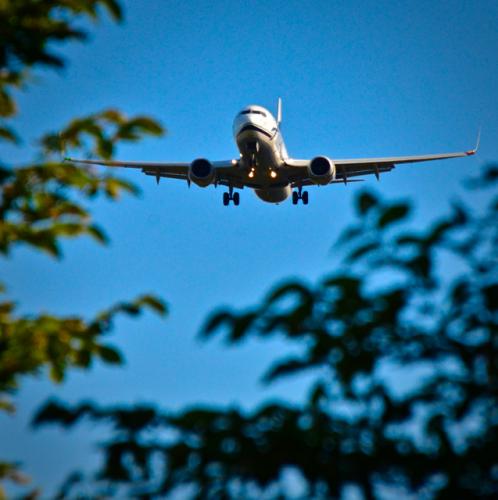Updated: Port of Seattle is set to chop down nearly 3,000 trees; other officials say the plan isn’t well thought-out
By Gwen Davis
Nearly 3,000 trees around SeaTac Airport will be cut down, in an effort to create for more viewing space for pilots who are landing planes.
The Port of Seattle decided that this tree-cutting effort, dubbed the Flight Corridor Safety Program, would span three years.
“Removal of the obstructions will ensure the Airport complies with Federal Aviation Administration (FAA) regulations for airport operators to protect flight operations into and out of the airport and assure that objects obstructing aircraft approach and departure areas are removed,” stated the Port’s State Environmental Policy Act (SEPA) in July.
“The Flight Corridor Safety Program is planned to be accomplished in three phases and will remove a total of approximately 2,750 trees over the next three years ending in 2019,” the act continued. “Phase 1, expected to begin in the fourth quarter of 2016, will include the removal of obstructions on Port-owned properties, Phase 2 will include the removal of obstructions on commercial and public properties, and Phase 3 will include the removal of obstructions on private properties.”
The act said that phase 1 will remove approximately 1,170 trees on 27 acres of Port of Seattle property. After the removal, new trees and vegetation will be replanted, in accordance to federal, state and local requirements.
Removing the trees will cost a total of $900,000.
However, SeaTac Councilmember Peter Kwon asked in a June council session if the FAA has the authority to mandate tree removal.
According to city material, Kwon heard from Port of Seattle CEO Ted Fick that the FAA does in fact not regulate trees, but if the airport were to do nothing, the FAA would consider the airport to be non-compliant with federal rules and regulations. In order to address the non-compliance, the FAA might consider approach and departure procedures to be unsafe and would limit their use or turn them off. The FAA might also limit or eliminate FAA funding. FAA entitlement funding is estimated to be $6.6 million in 2016 and up to $7.1 million in 2021, according to city materials. Other penalties might possibly occur.
But still, no one is mandating the airport to do anything.
Steve Pilcher, City of SeaTac Planning Director, wrote a letter to the port in August.
For instance, the phase approach assumes the Port will know what vegetation landscape will look like at given times throughout years, when in fact, Port officials can’t predict such information. After trees are removed, further evaluations need to be made before the Port can commit to removing more trees, Pilcher said.
The letter also stated that terminology in the plan is too vague, and shouldn’t be put into place until terms and statements are clearly delineated.
The letter additionally said that outside agencies were briefed on the project, but their inclusion was inappropriate.
“While these are admirable outreach efforts regarding the project, they do not qualify as ‘environmental information…. that has been prepared… related to this proposal’ and should be removed from this section.’”
Pitcher said the the act’s replanting of trees portion has ambiguous statements. The number of trees planted, and the species of the to-be plants are unknown.
Kwon said the tree-removal project impacts residents.
“Citizens have also expressed concerns about the pollution impact, since mature trees remove much more carbon dioxide from the environment than young newly-planted trees,” he said in an email. “There is also concern that newly planted trees may not survive to adulthood, so the proposed mitigation may not be effective in offsetting the long-term effects of removing mature, established trees.”
Richard Benjamin, a former resident of Des Moines likewise said that strong emotions are tied to SeaTac’s trees, including ones planted in tribute to American soldiers who “paid the ultimate price” for their country.
